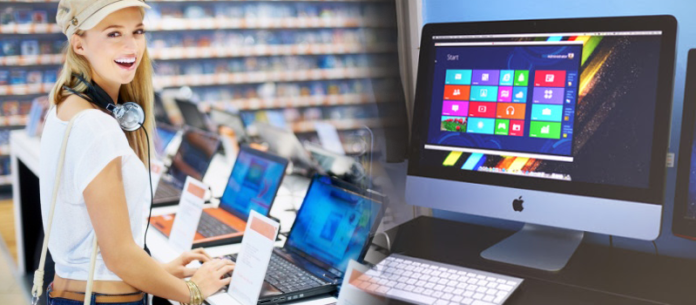At some point in our childhood, we have gone through a phase of desktop craving. Those big shiny boxed things with a monitor that created magic. The first computer has always been our first memorable research tour. The intricacies of having a sophisticated system have been as intriguing as exploring the universe. However, there are a few pitfalls that need to be taken care of. Here are a few things that one must follow while buying their first computer:
Budget
This is the most important part of the entire exercise. If you have not set a budget, then expect futility. Also, keep the maximum range. This is a range till which you can stretch monetarily. The budget also decides the kind of computer features; your system will have. The market is replete with computer parts which can be bought separately and assembled by a trained technician. This brings us to the next question: How to buy your first computer.
There are a few options
With a plethora of eCommerce companies, trading on everything on the face of the Earth, finding your dream computer will not be a tough task. However, you need to be thorough with the research. Also, every eCommerce site provides discounts and sales. Do not miss out on that. Compare the prices between them and create a list. Look for the kind of features each is providing you with.
What is computer Features?
Computer features can be broadly categorised into:
- Price
- Functionality
- Value addition
- Longevity
The price is something we have already discussed under the budget. Once the budget has been decided, the features can now be looked for.
The important part of a computer is generally:
The RAM
Modern computers with their intensive data processing capabilities require RAMs with greater computational strength. A larger RAM will enable the system to handle a greater number of applications seamlessly.
A 1GB or a 2GB RAM will suffice for a Microsoft 10 enabled system, but will nowhere give you the experience you are looking for. A minimum of 4GB to 8GB RAM is required.
The Processor
This is the brain of the computer. And it is because of this that companies manufacturing processors spend a humongous amount in research and development. As a result of that, they keep getting powerful, year on year. The price of the computer varies vastly depending on the kind of processor it holds. Core i7 and i9 enabled systems are more expensive than the earlier generation ones. Hence, the budget counts here too.
The Storage
The computer is essentially used for two purposes: Computation and Storage.
You would need a decent enough internal storage to save all those documents, audio and video files. These will require a lot of space that has to be thought of. And not just enough space would do. New age computers come with SSD or Solid State Drives which further increase the computational power of the system. Look at your budget and check whether you can afford an SSD one or an HDD one. HDD ones are the older generation hard drives using magnetic disks called platters while the new generation ones use flash drives, similar to what smartphones use. The latter is faster and more expensive than the former.
There is a third kind which combines the best of both worlds. A hybrid drive, consisting of a smaller SSD and a larger HDD can also be looked into. These are not as fast as pure SSD but hold more than the pure HDD ones. However, the less costly.
It is also essential to understand that the storage capacity is decided by your needs and nature of usage.
The Monitor
They come in varied sizes and nowadays shapes. The usual rectangular form factor has given way to newer square and curved monitors. Look for the ones that fulfil your needs. The kind of need dictates the monitor you will buy. If it’s just for general usage, then any monitor in the range INR 9000 to INR 13000 will suffice, However, if your work involves design and graphics, you would have to go for a high-end monitor. 24 inch or more are good options as a desktop monitor. However, if your preferred system is a laptop, do remember that laptop with a larger screen is heavier with low battery life. The nature of work will also define the resolution of the screen you would work with.
Size and Weight
A desktop does not have to bother about size and weight but a laptop has to. Mobility of a laptop is directly proportional to its weight and size. Heavier laptops can put extra pressure on battery life as well as the spine of the user. High-end laptops which are also euphemistically called ultra-books are slim and portable. However, they are extremely costly. It finally all boil downs to budget. For performance go for a thick and heavy one whilst if portability is an issue, you will also have a myriad choice.
The Operating System
While there are some, it essentially is a two-way fight: Microsoft Windows and Mac OS.
Each OS has its dedicated community. Mac users carry on working on an Apple laptop for years. So are those who prefer to work on Windows. Organisations mostly prefer Windows over a Mac OS because of the pricing. However, it is good to know that both the operating systems have improved vastly over the years and is a hit amongst its users.
Final Words
The latest computer features include faster connectivity, better-inbuilt security, camera and speaker systems for laptops, bigger and better RAM and processors et al. However, they all come at a price and that is the most important cog in the wheel. Once you fix that, the rest requires some diligent research and lo and behold, your first computer is on its way to adorn your study.











































